Sensing the Environment (I+II)
1/55
There's no tags or description
Looks like no tags are added yet.
Name | Mastery | Learn | Test | Matching | Spaced |
|---|
No study sessions yet.
56 Terms
Importance of Senses
Vertebrates: active animals living in a variable environment
• The more variable the environment, the greater the advantages of sense organs
(detect heat, light, pressure, other organisms)
• Define & limit the known world
• Sense organs enable vertebrates to:
– Monitor the environment
– Permit evolution of complex behaviors
• Behavior constrained by limits of sensory systems
Types of Sense Organs
1)Chemoreceptors
• Smell
• Taste
2)Mechanoreceptors
• Touch and pain
• Hearing/lateral line
• Equilibrium
3)Electromagnetic
• Light
• Heat
• Electrical / magnetic
Chemoreceptors
smell and taste
• Most ancestral
• Most universal
• Smell more sensitive than taste
• Augments basic tastes detectable by taste buds
Mechanoreceptors
• Touch and pain
• Hearing/lateral line
• Equilibrium
Electromagnetic Receptors
• Light
• Heat
• Electrical / magnetic
Taste
• Taste receptors cells (TRC) located in taste buds
• Taste buds located mainly on tongue (mammals) or also on other areas that contact food (other groups)
• Five basic tastes: sour, salty, bitter, sweet, umami
• Bitter tastes important in warning of toxicity
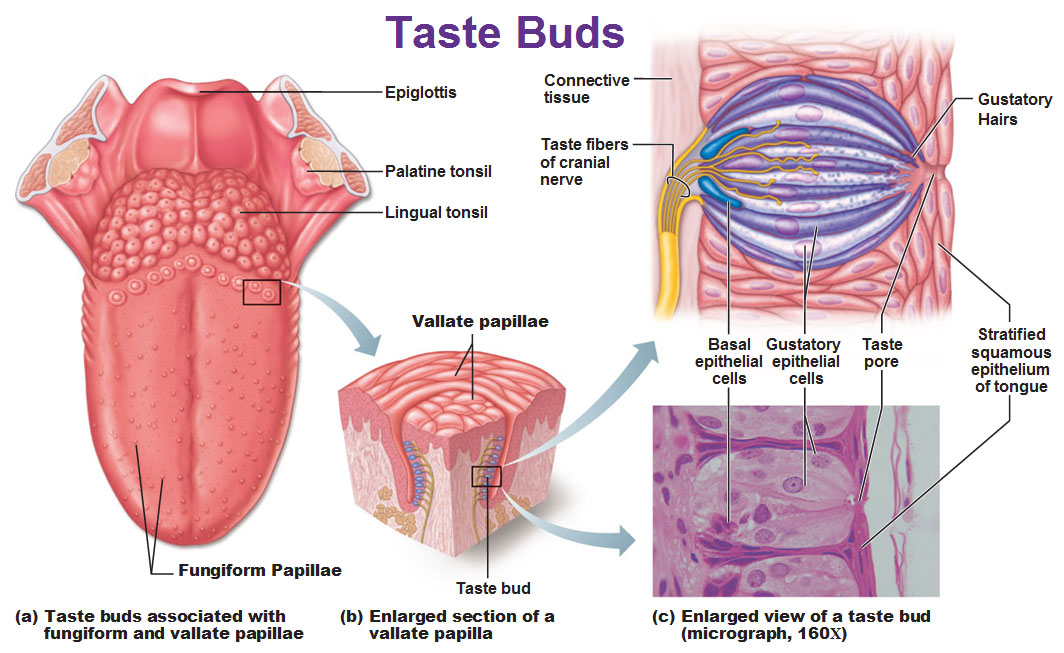
Smell
• More complex than taste
• Smell receptors located in nasal cavity (in special epithelium w/mucus)
• Although humans not particularly good smellers:
– 20 million olfactory receptors in your nose
– Humans can detect 10,000 odors
• Taste & smell commonly confused
– (easy to realize when you have a cold)
Chemical Scents
• Recognition: species, sex, individuals, predators, prey, etc.
• Emotional states (e.g., fear, readiness to mate)
• Advertisement (e.g., territorial, mating)
• Orientation (e.g., scent tracks)
• Best developed in certain groups (e.g., mammals; some amphibians)
Mechanoreceptors- Touch & Pain
• Receptors located in the skin
• Touch/Pressure distorts sensory receptor (nerve tissue) > local flow of electric current > information sent to CNS
• If touch/pressure is sustained, the receptor adjusts
• Most touch receptors are in the face and limb extremities
• Pain receptors may respond directly or indirectly to injury (important defense of the body)
Lateral Line System
• Found in fish, aquatic amphibians
• Pressure receptor for detecting wave vibrations & currents in water
• Sensory cells (neuromasts) in pits and grooves
• Helps detects nearby movements of prey, predators, mates, or just position of static objects (important in fish schooling)
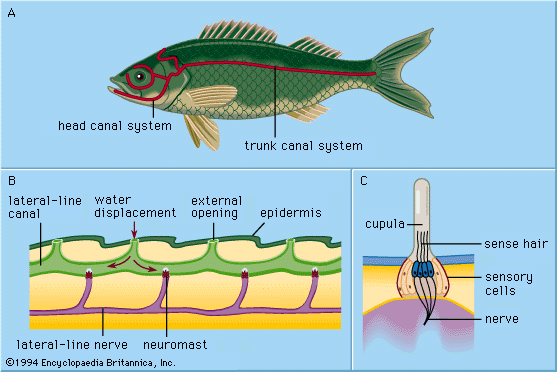
neuromasts
Collection of hair cells embedded in gelatinous wedge- shaped mass (cupula)
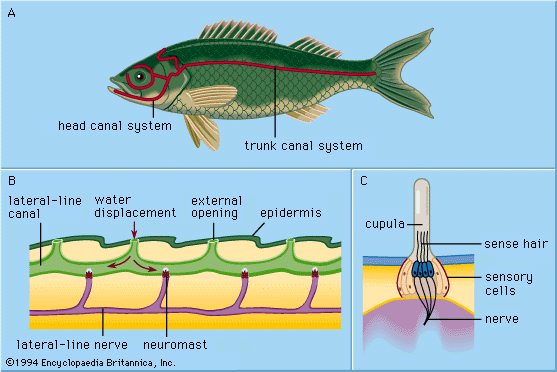
Vibrations o certain frequency is?
Sound
Underwater vs airborne sound? In water____
In water:
– More difficult to initiate (due to density of medium)
– Transmission (speed) more rapid (5x)
– Speed slows down: cold, depth
—Extremities travel best in water (really high clicks or really low bellows)
Frequency
Determines the pitch: high or low
• Cycles/sec (hertz = Hz)
Amplitude
Determines loudness (volume)
Ears (what and path?)
Structure for Detecting Sound
External vibrations > fluid vibrations > membrane
vibrations > move sensory cells > nervous impulses to CNS
Invertebrates live in a __________ world. _________ however do have ears (why?)
Silent
locusts, cicadas, crickets, grasshoppers & moths
—They produce sound
Vertebrate ear originated as a ?
balance organ (labyrinth)
Balance (Equilibrium) what structure? what info do they give? what do they respond to?
Labyrinth
head position and movement
respond to rotational acceleration/otoliths sense linear acceleration (AKA Change in condition!!)
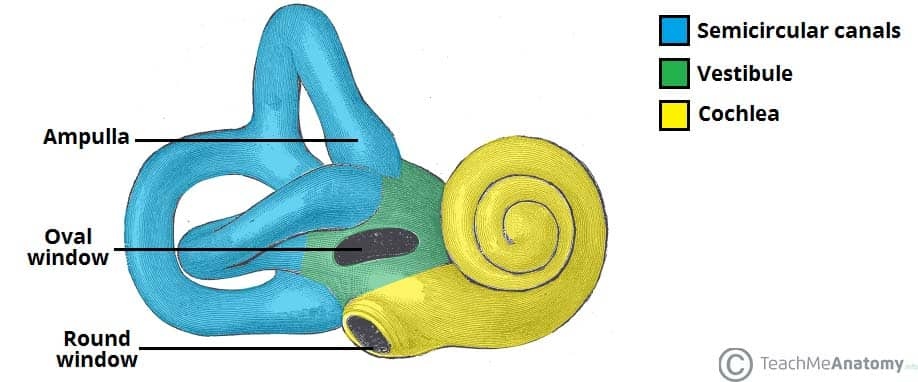
Hearing Mammals
outer ear, middle ear, inner ear
Outer ear
collects sound waves and take to tympanic
membrane, which starts vibrating
Middle ear
air-filled chamber with 3 bones (malleus, incus,
stapes)
• Vibrations (sound) coming from tympanic membrane is amplified 90 times by ossicles
• Under extremely loud noise, muscles contract, protectingear
Inner ear
• contains the cochlea - organ of hearing
• Filled with liquid that receives vibrations from middle ear
• Hair cells detect movement of the liquid and send info to CNS
cochlea
organ of hearing
Pitch discrimination in mammal ears depends on?
location of hairs stimulated
Loudness in mammal ears
number of hairs stimulated
Hearing Specializations (3)
Enlarged middle ear
Increases amplification
Often found in desert animals (many are nocturnal) (ex., kangaroo rat)
Asymmetrical ears
Owls
Sound arrives separately to each ear
Directional hearing
Sound catching facial disk
Important for prey location in the dark
Sonar-Echolation
Insectivorous/fisheating bats, Whales, porpoises, Weddell seals
High frequency sound (chirp/clicks) emitted and bounced back (prey & objects)
Important for dark environments
Electromagnetic receptors – Vision
• Eyes
• Light receptors = photoreceptors (rods and cones)
Eyes are?
The organ of vision
Light Receptors
Light receptors = photoreceptors (rods and cones)
Structure of the Eye
Eyeball - 3 layers (sclera, choroid, retina)
• Cornea is transparent (bends light)
• Iris regulates light opening (pupil)
• Lens – helps focus
Structure of Retina
Rods and cones
Photosensitive Cells in Retina
Rods
• Achromatic vision
• Lower visual acuity
• Good for vision in dim light
Cones
• Opposite of above
• Color discrimination
The human eye has many
more ____ than ____
rods than cones
How is Light is Detected?
Light (photon) strikes rod » activates rhodopsin» enzymatic activity of opsin » amplifies photon » generates and propagates a nerve impulse » info sent to CNS
(Process similar in cones, but cones have different photopigments that respond mainly to blue, green, or red wavelengths George Wald showed absorption for cones at different wavelengths)
Rods contain the photosensitive pigment?
rhodopsin
Short wavelength (what color?) Long wavelengths (what color?)
Short wavelengths = violet
Long wavelengths = red
Color Vision
• Increases contrasts & discrimination
• Mainly in diurnal animals (many nocturnal species are color blind)
• Good color vision in many fish,
salamanders, frogs, reptiles, most birds and some primates
• Difficult to determine
Evolution of Color Vision
• Color vision in vertebrates evolved ~ 350 MYA
– Found in: fish, salamanders, frogs, reptiles, most birds and some primates
• Full color vision LOST several times (e.g., mammals, snakes): due to loss of a cone type
– Regained in primates
Photosensitivity
• “Median eye” some reptiles &
many fish (light sensitive spot on top of head)
• Most vertebrates: image forming eyes
Visual Field
Area scanned by eyes
Monocular Vision (what type of eyes, pros and cons?)
• Many vertebrates with lateral eyes have monocular vision
• Vision field of left and right eyes do not overlap
• Allows large vision field but poor discrimination of distances
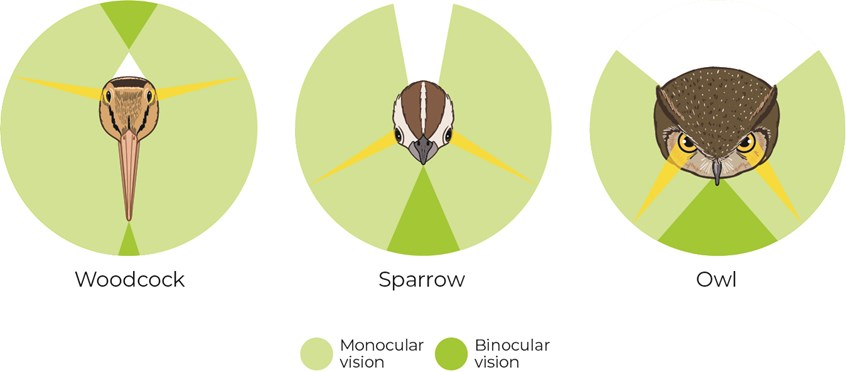
Binocular Vision
• Vertebrates with frontal eyes are capable of binocular vision
• Visual field of left and right eyes with broad overlap
• Allows depth perception (see in 3-D) and accurate location objects
• Somewhat reduced field of view
(both eyes facing same area)
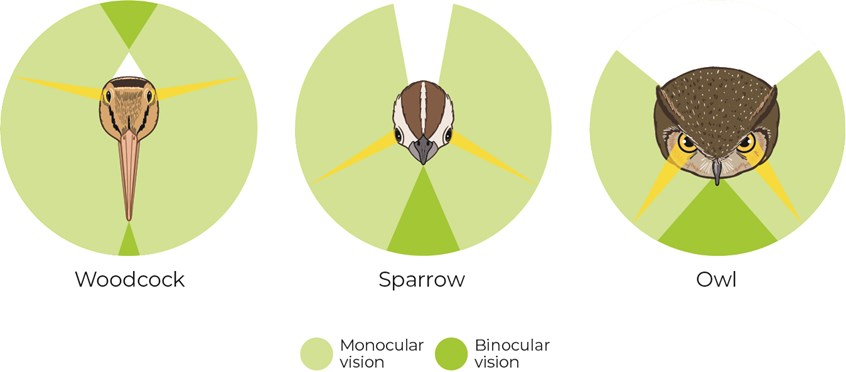
Using both binocular and monocular vision provides? examples?
high acuity (clarity,sharpness)
diurnal avian hunters - soaring hawkspots mouse
Amphibious (birds and fish) Adaptations (Eyes)
• Amphibious fish with highly modified eyes (4-eyed fish)
• Two pupils/eye: aquatic and aerial vision
• Many diving birds with dual focus: for aerial and aquatic vision
Round Eyes (who? and looks like?)
Only nocturnal or diurnal
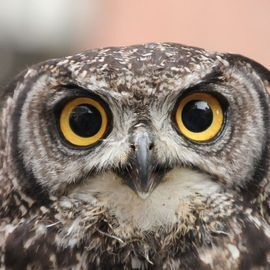
Vertical Eyes (who? and looks like? Allows for more?)
Nocturnal, sometimes active in day. Allows more complete closure
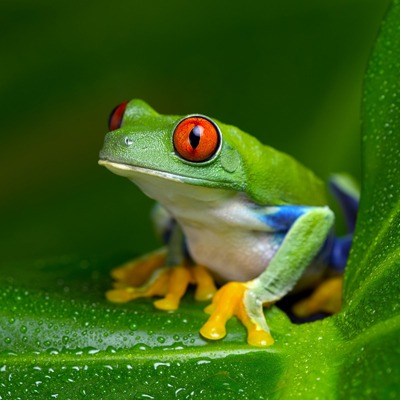
Vertical pin-holed (why?looks like?)
yield great depth of field despite monocular vision
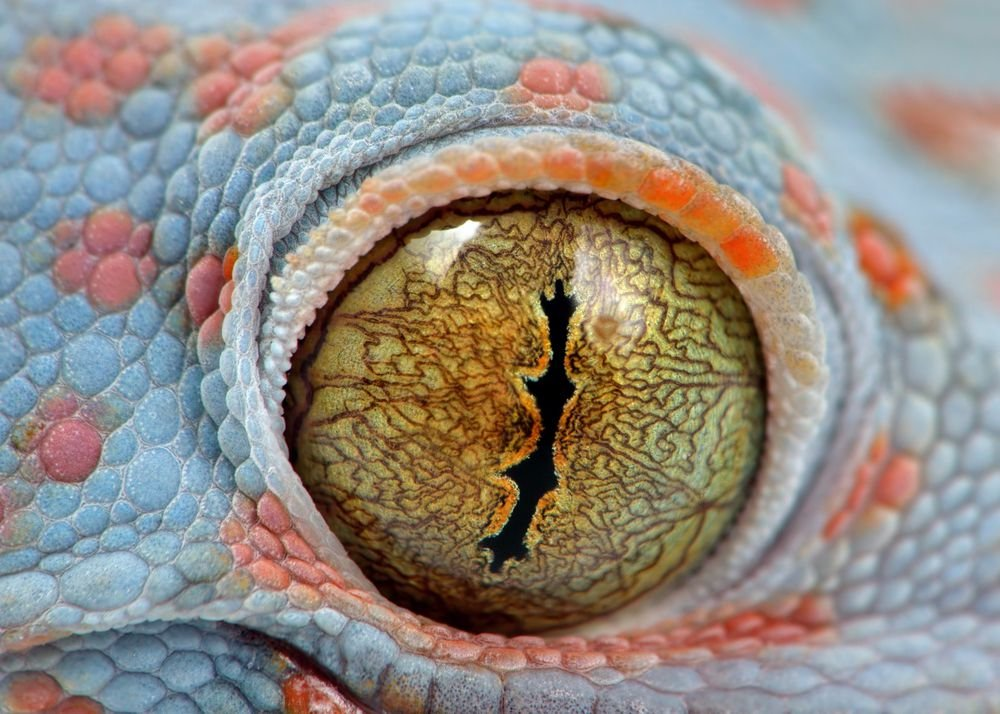
Horizontal Eyes (allows for?)
Allows wide-angle scanning
“Third Eyelid”
Nictitating membrane
• Transparent
• Prevents drying and helps cleanse eye
• Found in diverse vertebrate groups
Many deep water fish species capable of ________
+purpose?
bioluminescence
Foraging, predator avoidance, communication
Electromagnetic receptors - Heat
• Some vertebrates sense heat – cold with dermal receptors
• Pit vipers have pair pit organs to detect heat
- Most heat sensitive receptor in animals
Pit vipers have what?for what?
pit organs
Pit vipers use pit organs to hunt small mammals at night
What’s the deal with ground squirrel?
• California ground squirrels generate infrared signal when tail wagging to deter rattlesnake predation (increased bloodflow)
• Rattlesnakes ARE deterred by this (switch from predatory > defensive behavior: tested with robotic squirrel model)
• Squirrels do not display infrared signal to other snake predators that cannot detect signal (e.g., gopher snakes)
Electromagnetic receptors – Electricity
• Some fish can detect electric
signals through a network of
electro-sensitive cells in the
skin: (e.g., sharks can detect flatfish
under sand!)
• Other fish can both emit &
receive these signals
– Some can detect, then stun
prey
– Others use for navigation
and communication
Electromagnetic receptors – Magnetism
• Demonstrated but not well understood
• Some birds (especially migratory) and fish use magnetic fields for orientation and navigation